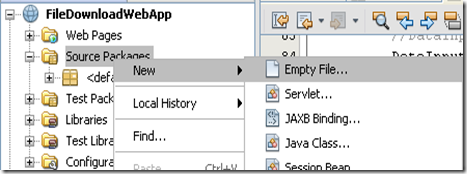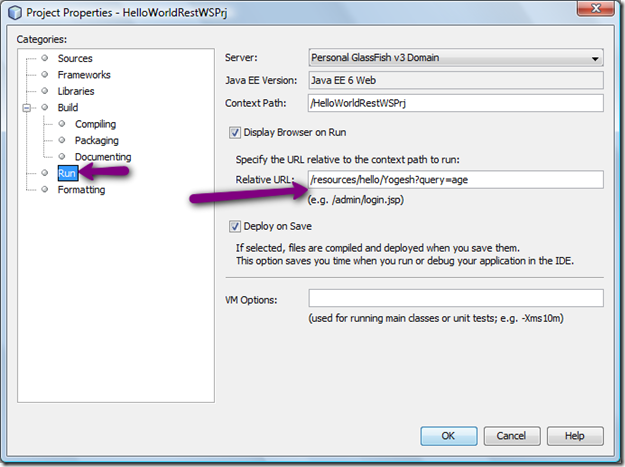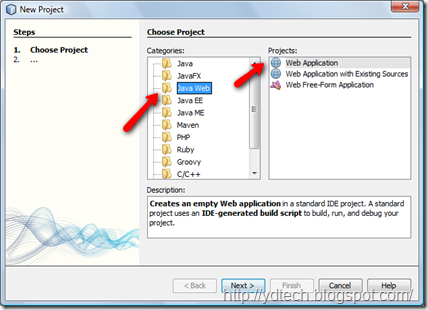Downloading a file from web application

This post explains developing a web application which allows requestor to download a file. Here web app will have a servlet which streams requested file to requestor. follow the step to develop it using NetBean 6.8 1. Create a web application [ refer previous posts ] 2.Create a Servlet and add the code given below in doGet method String filePath =null; int length =0; //accept file name as parameter String fileName = request.getParameter("FILE_NAME"); InputStream is = getServletContext().getClassLoader().getResourceAsStream("/"+fileName); if(is == null){ PrintWriter writer = response.getWriter(); writer.append("<html><body><h1> File "+ fileName +"has not Found</h1></body></html>"); writer.close(); } //set header information response.setCont

